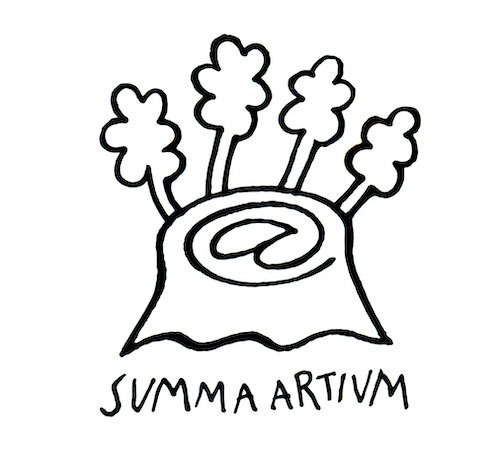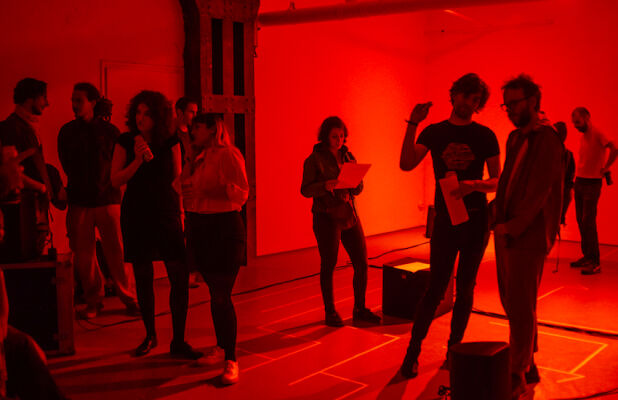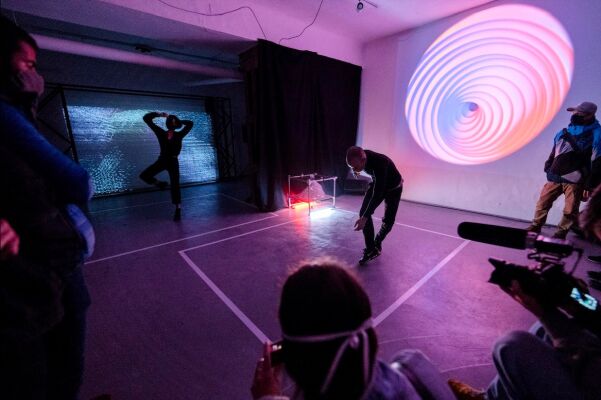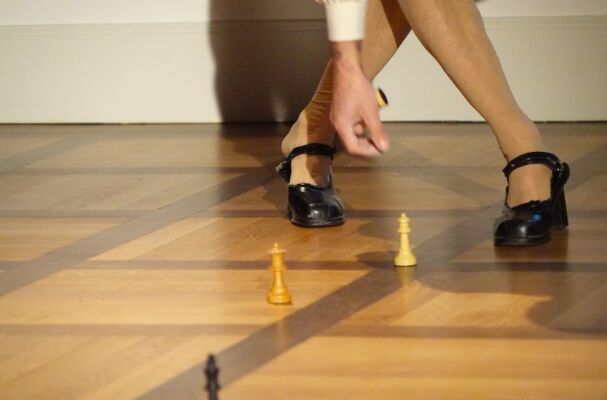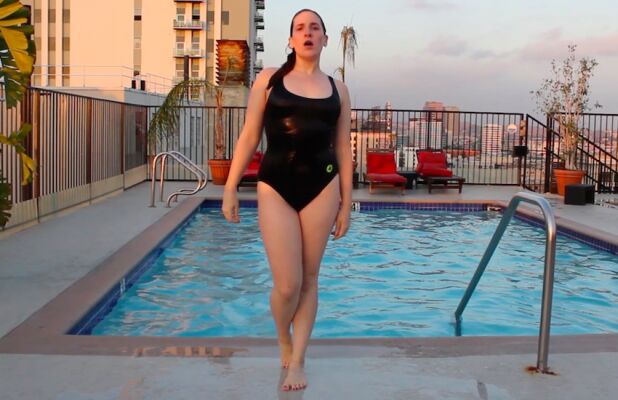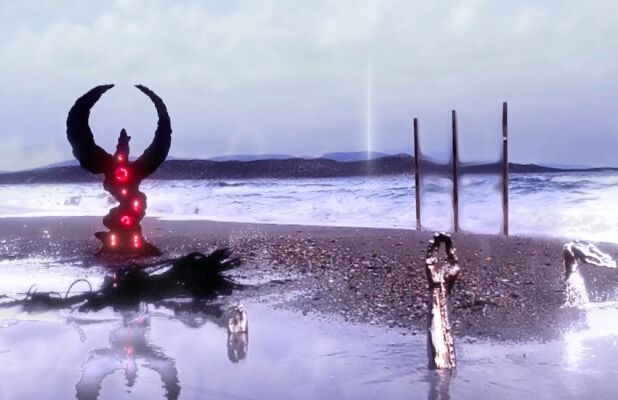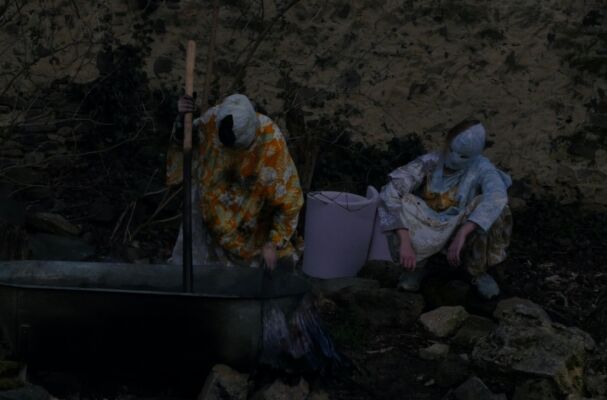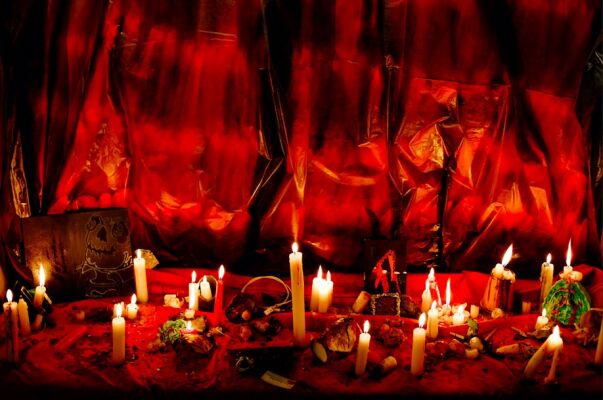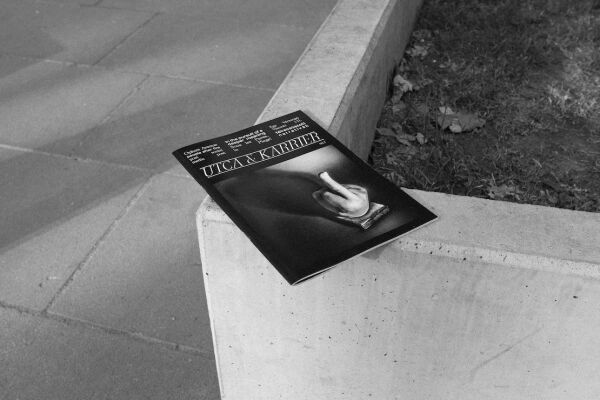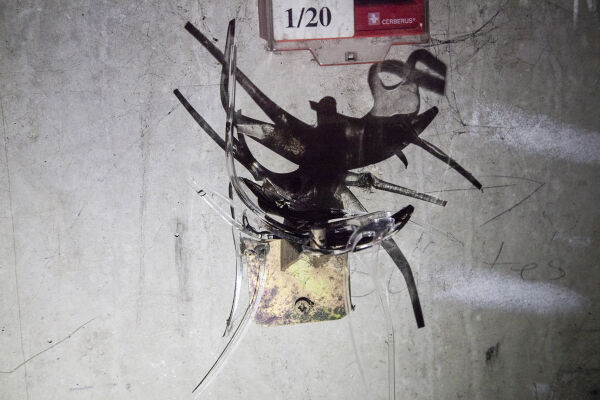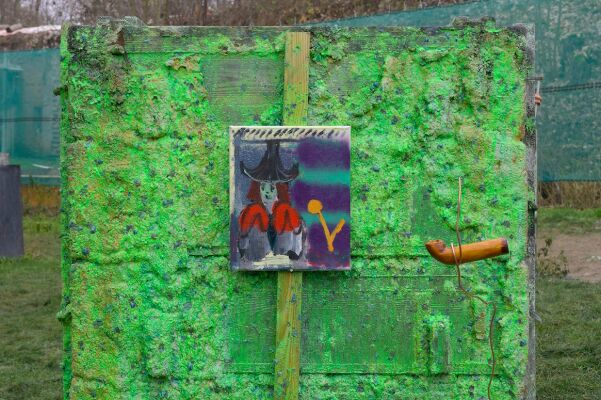Gold und Liebe X – Hollow
How to thematize something that is otherwise hidden
Hollow embodies the shared hallucinations of choreographer Viktor Szeri, game designer Tamás Páll, and curator Gyula Muskovics. They have been working collectively since 2018, combining their visible and immaterial forces with sound and game mechanics to create immersive environments and cross-reality experiences. They merge the methodologies of choreography and contemporary dance with poetics, augmented reality, and live action role-playing to build world prototypes where the dominant systems of consensual reality can be questioned and modified. Hollow has provided access in various forms to the land of obscurity, investigating topics and contexts such as queer cruising, millennial cults, eco-anxiety, nature as a black box, and walking as a psychoactive substance. Hollow is constantly becoming, and most of their performances and installations are ongoing. Moving seamlessly across virtual terrains and the corporeal, they blur the line between fictional and consensual realms and distill personal domains into collective experiences. Hollow is a shapeshifter; they melt and mutate in the moment and the space they occupy. They are a crucible where identities and narratives dissolve and bleed into each other.
Your first joint work, Phoenix (2018), was a multi-hour, immersive situation somewhere on the border of a performance and a party experience. Here, among many other references, you dealt with club culture and specifically the liberating spaces of darkrooms*, which are able to circumvent the rules of social institutions and allow for both individual and shared, free forms of intimacy.
Phoenix was first presented in Trafó, more precisely next to the theatre in the empty spaces of a long-abandoned supermarket. This space created an atmosphere of the whole event happening in a not so distant future. It also set a certain approach to us, we are more drawn to unconventional spaces than traditional art venues ever since. We always try to adjust our installations and performances to the specificities of the given circumstances and make them not only space but situation-specific.
In our first project together we aimed at creating a situation in which our three different viewpoints can gain expression. Although, it was important to not merely present a mix of different media but to create an immersive environment in which the virtual and physical, the text, the movement, the body and the music blend and move together, with the viewer being able to be the part of all this.

Tell me more about the darkroom reference, what directions did this space open up and how did it connect with the mythological figures of the Minotaur and the Phoenix?
The darkroom is a place where borders between identities and realities blur. Bodies meet and intertwine randomly in the dark, new combinations, unions are formed which transform, multiply or vanish without a single trance. Darkness is the state of constant becoming, ungraspable and beyond representation, it can be a tool for subverting dominant regimes – may it be heteronormative values of society or the rigid artistic institutional system.
The phoenix in the title, constantly reborn from its ashes, is referring to a kind of cyclic order, which characterizes the whole event unfolding as a series of musical and performance loops. While the lonely minotaur, waiting for its prey (or liberator?) in the labyrinth, differentiates the picture of gay/queer culture. The darkroom, and in the past decade, also the online dating apps can create a liberating, safe place but they are not necessarily void of the hierarchies and normative structures that
affect the outside world – so they can also become spaces of trauma. Phoenix’s central question, therefore, is how to thematize something that is otherwise hidden – without hurting that particular community or further reinforcing stereotypes.
The immersive environment you wrote about defines all of your projects. The theme of Summit (2019) was a dystopian future event and was realized as an initiation session that prepares for an inevitable catastrophe. Where did this work start?
The atmosphere was already apocalyptic by the time we started to work on this project. Discourses about the ecological crisis have become more prevalent, and everyone has begun to realize that this is not a matter of faith. Accordingly, it has become more common in art to thematize the destructive impact of humanity on the environment and the challenges and issues that arise from it. Summit departs from here. It envisions the coming of a planetary event that will radically change living conditions on Earth. This project is about waiting, speculation, and groping in the dark. Its continuity is given by the unavailability and incomprehensibility of the “Future Event”, which stems from the insurmountable distance between the present and the future. Nevertheless, in a strange way, we have managed to create a situation that is in many ways reminiscent of the period since the Covid-19 pandemic.
Darkness, as a state of “becoming,” also came to the fore here.
Perhaps because it was important to us not to approach the problem as nature-loving “beautiful souls” who seek to restore the balance of the world. For it is the illusion of man's externality, and thus the objectification of nature, that is most responsible for the damage suffered by the planet. We are much more interested in the idea of a darker ecology in which our only option as human beings, is to immerse ourselves in our own decay and accept the inevitability of the end. It was also a question for us how to bring this idea to the level of the individual. We have dealt a lot with the thought of passing away and our fears about our own death, as well as overcoming them. For example, we got an interview in which the French philosopher Michel Foucault talks about the fact that if our culture allowed us to prepare carefully for death all our lives, the thought of the end would be much less creepy (and probably there would be less people ending their life before its time). Summit is therefore a ceremony, a preparation for the unknown. The funeral-like gathering was given a particularly intimate atmosphere by the fact that when we first performed the piece in Prague, at MeetFactory, where we were just resident artists, it was possible to attend only in groups of twenty people. Since then, we have presented it several times in a larger format. Next time in May, it will be on display at the Placcc Festival in public.
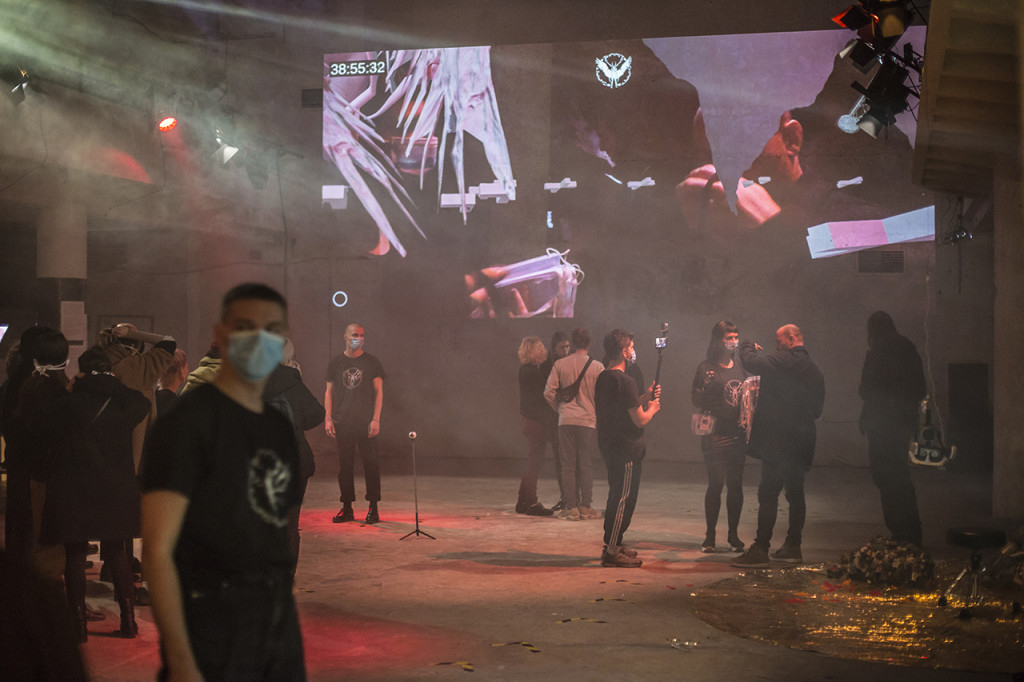
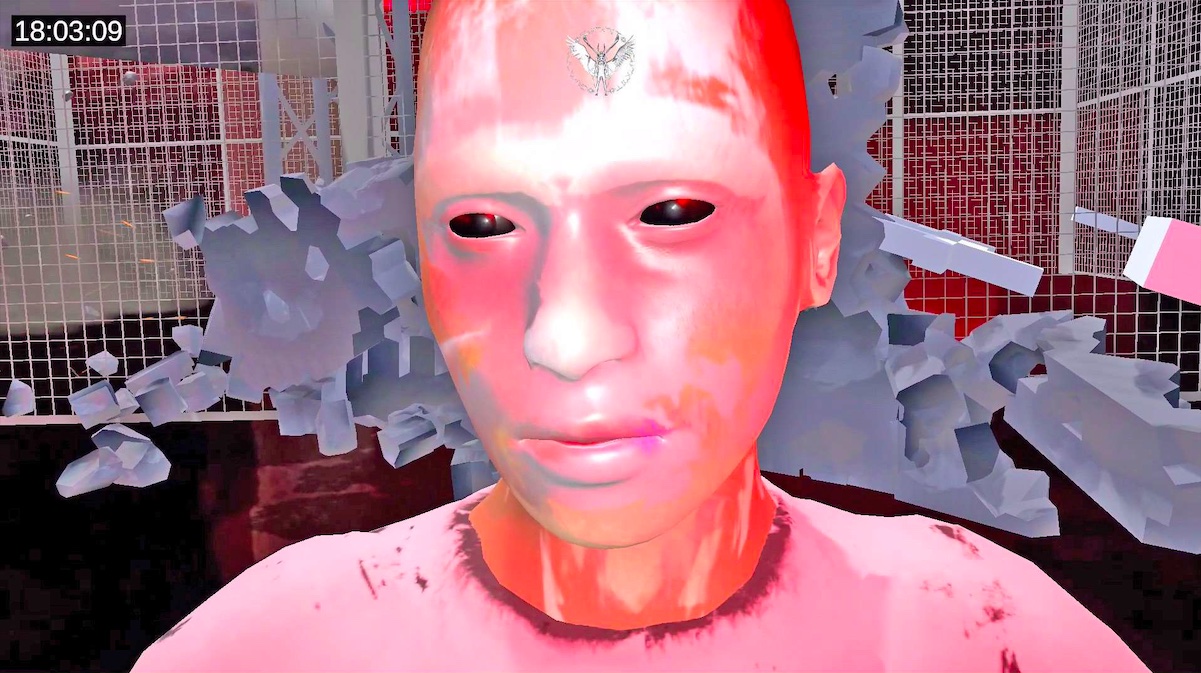
Although your works function as separate chapters, there are no closed boundaries between them. Intimacy, different forms of communities, the possibility of rebirth, or spontaneous role-play are some of the main methods, phenomena and atmospheres.
In our immersive performances we often draw on the genre of live action role-playing and we also think it’s important not to think in closed projects, but rather in continuities and discontinuities between different worlds. For this method a toolkit is necessary to build on and with which we can shape these fragments of fictional realities. Choreography, narrative creation, poetry and technological simulations combine in our methodology with a thematic research, that we simultaneously and build on each other. We often start from dystopias and utopias, and improvisation, always adapting projects to the given situation, and reworking our own module projects play an important role in our work. The latter is interesting not only from the point of view of world construction, but also from that of culture production. While our pre-existing worlds are mixed with new ones, we would like to draw your attention to the size of the material accumulated during each project, and through this to the amount of (invisible) work invested.
This method is similar to a mosaic spreading in several directions in space and time. You pick up a thread of the story — theme, element, character — over and over again, build on, and then release it again.
The first project in which we consciously use crossover as a tool is the installation and performance of Archive II (The Beyond) exhibited at MMM in aqb. This was followed by an experimental role-play event called The Camp, where we brought together a 10-person company to “tie together” characters from Hollow’s obscure history at a dinner. Everyone had to embody an already existing character, freely interpreting its personality as well as its relationship to the situation and other characters. By the way, this was the first event we had already implemented under the name Hollow. And one of the most important qualities of Hollow, who is actually the common avatar of the three of us, is that they mix different realities and dissolve identities in this mix.
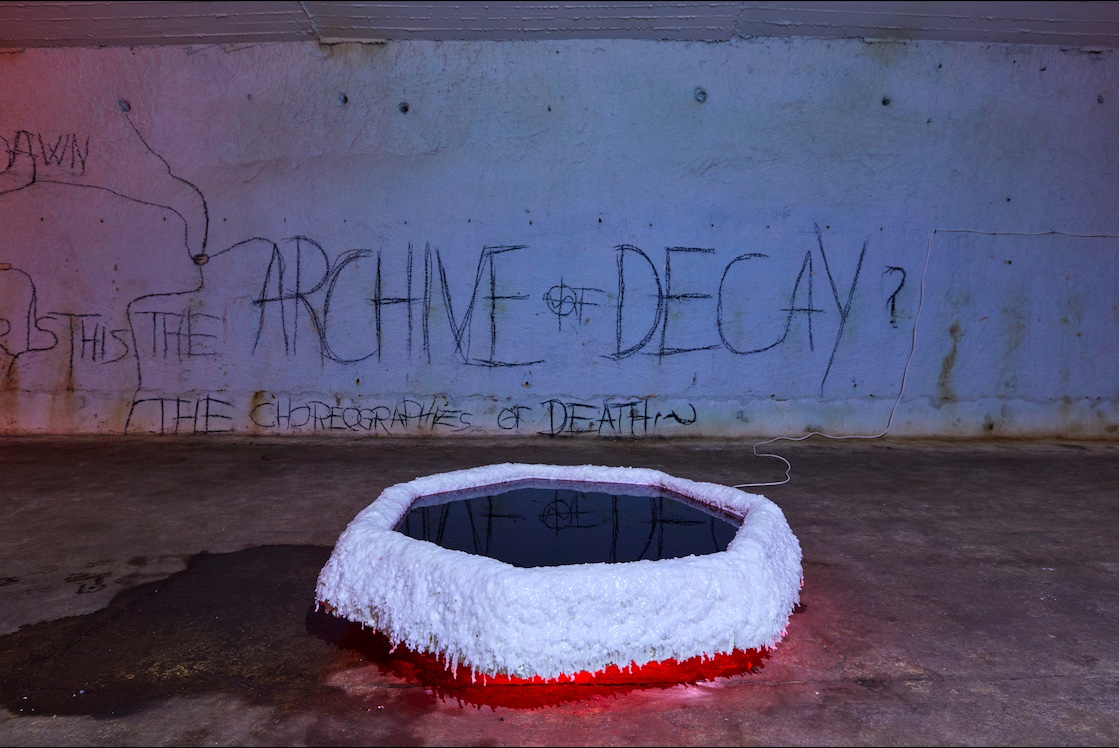
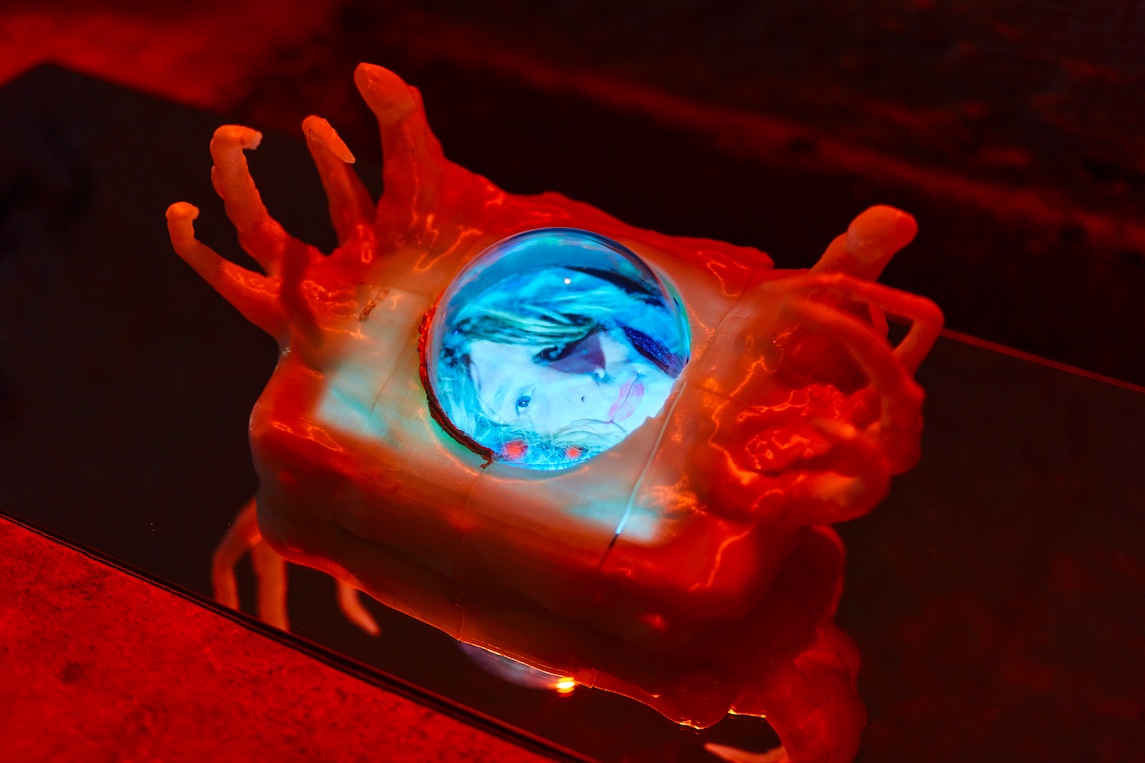
Can you describe what the nodes are through which different projects come together?
In our performances, sound and music has a special role and this part has always been created in collaboration with musicians András Molnár and Tamás Marquetant since Phoenix. Great emphasis is also placed on interaction with the audience, which is why continuous development is the lifeblood of our work. Each presentation practically manifests itself in a specific space and time during a dialogue (whether physical or narrative) with the given audience. Our narrative toolkit also includes processing, reinterpreting, and sometimes recombining various predictions, forecasts, and techno-political developments. In the development of the concepts, we draw a lot on the various contemporary philosophical and theoretical frameworks, which are mostly present liminally or somatically in the pieces, but sometimes we also display specific quotations and references.
How do you see these works from today, when (with minor interruptions) live events that move together with the audience have been banned for a year now?
We are mostly interested in live events, but since we are a multidisciplinary group, we are also able to adapt to current constraints. At the moment, for example, we have been working with a group of artists called Omsk Social Club in Berlin on a joint project in which our starting point was also darkness. The initial plan was to create a piece using the methodology of live action role-playing, but we had to devise the project for the current circumstances. It was important for us to create an experience that doesn't require collective presence in the same venue, but that does not take place exclusively in the online space.
This work (Windspeed) also responded to the epidemic situation in its content. Despite the closures, you still realized a physically distant but collective experience. According to the story, at the full moon in February 2021, Mercury’s position created a conjuncture in which Thermadite, the first character hacked Telegram’s communication system, where chat became a collective hallucination. Participants take part in a kind of lunar sleepwalking. How is your collaboration with Omsk Social Club structured, and what can we know about the next phases?
Windspeed is the first part of the Sprawled Soilware project, we started working on this last autumn. Similarly to us, role-playing methods are decisive in Omsk's work, which is why the collaboration between Hollow and Omsk started, which is being realized by the way as a co-production of the Budapest based Sín Art Center and Montag Modus in Berlin, with the support of the Goethe Institute's International Co-Production Fund. We first thought of a live event that provides an opportunity to dissolve in the darkness of nature, to experience the blurring of realities. However, as it was clear from the beginning of the joint work that the organization of such an event could be hampered by the epidemic, we tried to start from the given circumstances. We came to build the whole project on an experience that is familiar to many at the moment. Sprawled Soilware consists of three different walks led by three fictional characters. These creatures hacked a messaging platform called Telegram to help the audience reveal the invisible layers of their environment. We designed three chatbots that interact with the player in the form of audio files, videos, stickers, gifs, AR objects, and poems, and to give the players various tasks as well.
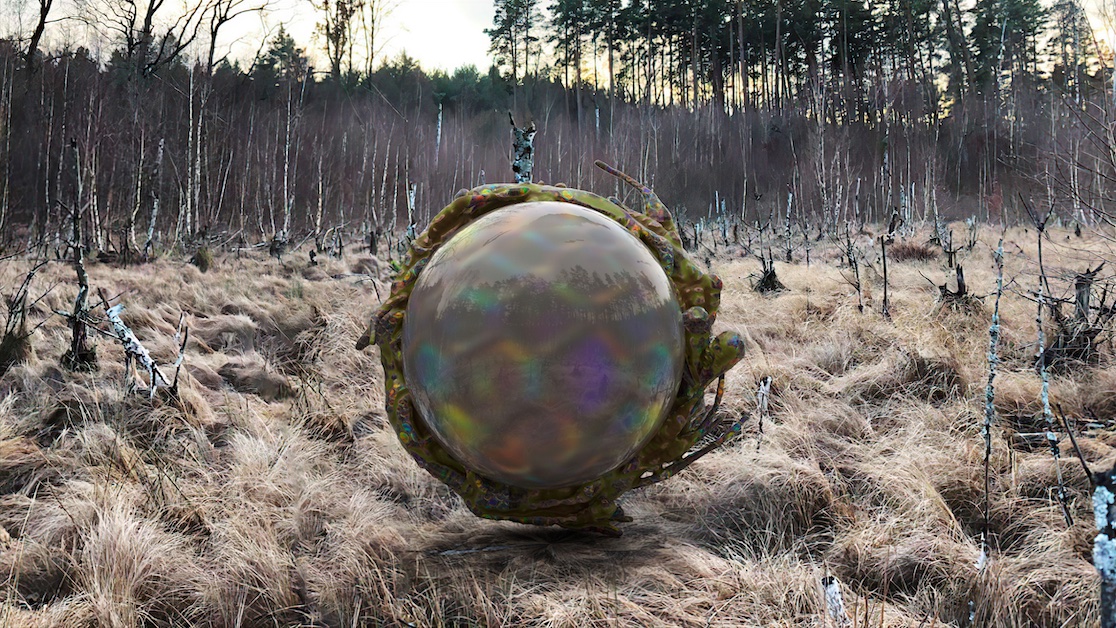
The point of the project is that you can be part of this 1–2 hour experience anywhere, anytime, either alone or in groups, so it fits in well with the current precarious situation. Nonetheless, we tried to publish the first part in such a way that through the mediation of Thermadite Renji, who is the character leading Windspeed, some kind of collective experience would also be created. At the time of the project’a release, on April 27, at 5 pm Budapest/Berlin time, we also designated certain locations in different cities around the world, where it was possible to join Windspeed through your smartphone individually. As a result, despite the closures, roughly 150 people were able to take part in the same walk simultaneously, while someone was at Görlitzer Park or Népliget, others at UNAM Botanical Garden in Mexico or Shek O Country Park in Hong Kong. The next two chapters will be released on April 26, the day of the full moon. While Thermadite is an invasive character, L. is more like a wanderer and O. is a melancholic travel companion. For information on both Windspeed and the new episodes, visit soilware.net.
* These spaces are still able to escape the systems of conservatism and surveillance. They appear as spaces of free sexuality and independence and as symbols of many aspects of the queer movement that creates an escape from heterosexual oppression.
This article was created with the support of Summa Artium.
